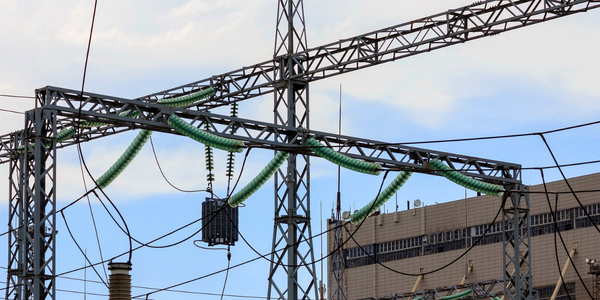Technology Category
- Application Infrastructure & Middleware - Database Management & Storage
- Infrastructure as a Service (IaaS) - Private Cloud
Applicable Industries
- Construction & Infrastructure
- Electrical Grids
Applicable Functions
- Maintenance
- Sales & Marketing
Use Cases
- Picking, Sorting & Positioning
- Time Sensitive Networking
Services
- Cloud Planning, Design & Implementation Services
- System Integration
About The Customer
Balluff GmbH, headquartered in Neuhausen, Germany, is a family-owned company and a world-leading manufacturer of sensor solutions. The company employs around 2,750 people in 50 countries. Balluff offers sophisticated technology, cutting-edge electronics products, application-specific customer solutions, and highly trained service staff. In 2013, the company achieved annual sales of EUR 335 million. Balluff relies on SAP solutions to manage the business, including SAP Business Warehouse for data analysis and reporting. As the business grew, data delivery slowed down, which risked making poor investment decisions and being unable to deliver the best possible service to its customers.
The Challenge
Balluff, a world-leading manufacturer of sensor solutions, was facing challenges due to growing data volumes. The company's sales and business development reports were taking longer to produce, and processing tasks scheduled to run overnight were almost running into business hours. This was negatively affecting information availability and application performance. The company needed to accelerate access to information to support its sales and business development functions. Balluff wanted to optimize its entire IT environment, including software, servers, and storage, to increase the performance of its transactional SAP ERP environment and boost productivity of its business users across all departments. The company also aimed to improve decision-making with faster, more accurate business analytics capabilities for its data warehouse.
The Solution
Balluff implemented a complete IBM solution to run its transactional SAP ERP and analytical SAP Business Warehouse applications. The solution included SAP Business Warehouse with IBM DB2 with BLU Acceleration, IBM Power 750 servers with IBM POWER7+ processors, IBM System Storage SAN Volume Controller in combination with IBM V5000 Storage Subsystem and IBM FlashSystem 840, and IBM Tivoli Storage FlashCopy Manager for quick backups and system copies without downtime. The company upgraded its SAP ERP applications and the underlying IBM server and storage infrastructure before deploying IBM DB2 with BLU Acceleration software to speed up its SAP Business Warehouse application. The company also deployed IBM Tivoli Storage Manager with a next-generation IBM tape solution and an IBM TS4500 Tape Library, using LTO6 tape drives for reliable backup and restoring processes for mission-critical data.
Operational Impact
Quantitative Benefit

Case Study missing?
Start adding your own!
Register with your work email and create a new case study profile for your business.
Related Case Studies.

Case Study
IoT System for Tunnel Construction
The Zenitaka Corporation ('Zenitaka') has two major business areas: its architectural business focuses on structures such as government buildings, office buildings, and commercial facilities, while its civil engineering business is targeted at structures such as tunnels, bridges and dams. Within these areas, there presented two issues that have always persisted in regard to the construction of mountain tunnels. These issues are 'improving safety" and "reducing energy consumption". Mountain tunnels construction requires a massive amount of electricity. This is because there are many kinds of electrical equipment being used day and night, including construction machinery, construction lighting, and ventilating fan. Despite this, the amount of power consumption is generally not tightly managed. In many cases, the exact amount of power consumption is only ascertained when the bill from the power company becomes available. Sometimes, corporations install demand-monitoring equipment to help curb the maximum power demanded. However, even in these cases, the devices only allow the total volume of power consumption to be ascertained, or they may issue warnings to prevent the contracted volume of power from being exceeded. In order to tackle the issue of reducing power consumption, it was first necessary to obtain an accurate breakdown of how much power was being used in each particular area. In other words, we needed to be able to visualize the amount of power being consumed. Safety, was also not being managed very rigorously. Even now, tunnel construction sites often use a 'name label' system for managing entry into the work site. Specifically, red labels with white reverse sides that bear the workers' names on both sides are displayed at the tunnel work site entrance. The workers themselves then flip the name label to the appropriate side when entering or exiting from the work site to indicate whether or not they are working inside the tunnel at any given time. If a worker forgets to flip his or her name label when entering or exiting from the tunnel, management cannot be performed effectively. In order to tackle the challenges mentioned above, Zenitaka decided to build a system that could improve the safety of tunnel construction as well as reduce the amount of power consumed. In other words, this new system would facilitate a clear picture of which workers were working in each location at the mountain tunnel construction site, as well as which processes were being carried out at those respective locations at any given time. The system would maintain the safety of all workers while also carefully controlling the electrical equipment to reduce unnecessary power consumption. Having decided on the concept, our next concern was whether there existed any kind of robust hardware that would not break down at the construction work site, that could move freely in response to changes in the working environment, and that could accurately detect workers and vehicles using radio frequency identification (RFID). Given that this system would involve many components that were new to Zenitaka, we decided to enlist the cooperation of E.I.Sol Co., Ltd. ('E.I.Sol') as our joint development partner, as they had provided us with a highly practical proposal.

Case Study
Splunk Partnership Ties Together Big Data & IoT Services
Splunk was faced with the need to meet emerging customer demands for interfacing IoT projects to its suite of services. The company required an IoT partner that would be able to easily and quickly integrate with its Splunk Enterprise platform, rather than allocating development resources and time to building out an IoT interface and application platform.

Case Study
Bridge monitoring in Hamburg Port
Kattwyk Bridge is used for both rail and road transport, and it has played an important role in the Port of Hamburg since 1973. However, the increasing pressure from traffic requires a monitoring solution. The goal of the project is to assess in real-time the bridge's status and dynamic responses to traffic and lift processes.

Case Study
Hydro One Leads the Way In Smart Meter Development
In 2010, Ontario’s energy board mandated that time-of-use (TOU) pricing for consumers be available for all consumers on a regulated price plan. To meet this requirement, Hydro One needed to quickly deploy a smart meter and intelligent communications network solution to meet the provincial government’s requirement at a low cost. The network needed to cover Hydro One’s expansive service territory, which has a land mass twice the size of Texas, and its customers live in a mix of urban, rural, and remote areas, some places only accessible by air, rail, boat or snowmobile. Most importantly, the network needed to enable future enterprise-wide business efficiencies, modernization of distribution infrastructure and enhanced customer service. To meet these needs, Hydro One conceptualized an end-to-end solution leveraging open standards and Internet Protocols (IP) at all communication levels. The utility drew upon industry leaders like Trilliant to realize this vision.

Case Study
Selling more with Whirlpool
Whirlpool wanted to add connectivity to appliances and transform the company's relationship with customers. Traditionally, Whirlpool interaction with customers was limited to purchases made once every ten years. Connected washer and dryers provide exciting new features like remote management of start times and inter-machine communication.

Case Study
SAS® Analytics for IoT: Smart Grid
Companies face falling revenues, rising infrastructure costs, and increasing risk of outages caused by inconsistent energy production from renewable sources. Less money is coming in as more people and organizations take steps to curb their energy use. Utilities are paying more to maintain and build infrastructure due to increasing complexity, resulting from the rising number of intermittent and variable renewable energy sources connected in the distribution grid.



